What Is Canvas Art? A Historical Journey through Styles and Types
Posted by MintSuper Art on 28th Jan 2024
If you've ever found yourself wondering, 'What is canvas art?' then this blog post will be a delightful journey of discovery for you.
Canvas art has long been a cornerstone of artistic expression, providing a versatile and timeless medium for artists to convey their creativity. With a unique, rich history that sets it apart from other mediums, this art form has been popular for centuries due to its durability and adaptability, which continues to inspire artists around the world.
Now, let's pull back the curtain on canvas art and discover the historical journey through the styles, types, and famous canvas artworks that have shaped the world of art.
What Is Canvas Art?
Canvas art, in its simplest form, is an artwork created on a stretched piece of fabric known as 'canvas.' It is a popular medium for both artists and art enthusiasts due to the unique qualities it brings to the table.
"Picture this: artists stretching their imagination across the fabric, creating worlds that capture eyes and hearts alike."
Canvas art is a storyteller of textures, colours, and emotions. It's not just any fabric—it's a stage where artists bring their visions to life.
Canvas art holds great significance in the world of art for several reasons. Firstly, the canvas provides a durable and long-lasting surface for artists to work on. Its stability allows the artwork to survive for centuries, preserving the artist's vision and creativity.
It also allows for greater flexibility in terms of size. The artist can choose to work on small canvases or create large-scale pieces, offering endless possibilities for expression. This versatility has made canvas the preferred choice for many artists throughout history.
Furthermore, canvas texture offers depth and dimension to artworks. It enhances the experience by providing a textured surface, which can influence the way the paint is applied and the overall visual effect of the piece.
Overall, canvas art continues to be a timeless medium that allows individuals to adapt and express creativity and experiment with different styles and techniques while providing audiences with a unique visual experience. Canvas art is not only a medium for painting but has also become a popular choice for prints, adding a touch of sophistication to any space.
History of Canvas Art
Canvas art's journey is as rich and textured as the material itself.
Canvas art has a long and rich history that dates back to the early Renaissance period, around the 14th century. Before the widespread use of canvas, wooden panels were the primary surface for painting. However, it gained prominence during the Renaissance, with artists like Leonardo da Vinci and Michelangelo embracing canvas as a preferred medium - a material perfect for painting due to its durability and flexibility.
Some of the world's most iconic artworks, such as Mona Lisa by Leonardo da Vinci and The Starry Night by Vincent van Gogh, were painted on canvas material.
Over the centuries, canvas revolutionised how art was created and experienced, offering versatility, a unique texture, and a forgiving surface that allowed for corrections and layering, ultimately giving artists greater creative freedom.
With the progression of technology, the 20th century witnessed the emergence of canvas printing, which enabled artists to replicate their original works on canvas.
Today, it remains a highly popular medium for artistic expression, and canvas art has seen leaps from gallery walls into living rooms worldwide—a testament to its enduring appeal. It has not only stood the test of time but continues to evolve with modern techniques and changing tastes in art.
What Is Canvas Made Of?
The term "canvas" often brings to mind images of beautiful paintings and works of art. But what exactly is canvas made from?
A traditional canvas type is made from hemp, but modern versions are typically composed of natural fibres that offer excellent absorbency, which makes them ideal for holding paint.
Canvas, as we know it today, is primarily made from cotton fibres. These fibres are spun into yarns and then woven together to create a durable material that can withstand the rigours of painting techniques. Cotton canvas is generally lighter and more flexible compared to other materials. It provides a soft texture ideal for various types of artwork, including oil paints or acrylics, which many artists find appealing for their work.
In addition to cotton, linen has also been used historically in canvas production. Derived from flax plants, linen fibres offer an even more robust option than cotton. They are stiffer and have a tighter weave, which provides good support for painting. Linen canvases are stronger and smoother, making them perfect for detailed artworks where precision matters most.
Beyond natural materials, synthetic options such as polyester have found their way into modern canvas production due to their cost-effectiveness and uniformity. However, they lack the unique textures offered by natural fibre canvas, which some artists prefer. They are often used for outdoor or industrial purposes due to their high resistance to UV light, moisture, and abrasion.
In essence, canvas art owes its unique appeal and longevity to these diverse materials and meticulous preparation processes.
Types of Canvas Print Layouts
Canvas prints are a popular way to display artwork and photos. They offer a unique and artistic way to showcase images and create a personalised space. These are created by printing an image directly onto a canvas, which is then stretched over a frame for display.
Canvas prints come in a variety of layouts that cater to different artistic expressions. Here are some common types of canvas print layouts:
- Single Panel: The single panel layout is perhaps the most traditional form. This type involves printing an entire image onto one piece of canvas, making it perfect for showcasing standalone pieces or portraits.
- Diptych: A diptych layout involves printing an image across two separate panels, usually of equal size and placed side by side. It's a creative way to add visual interest while maintaining continuity in design.
- Triptych: Triptychs divide an artwork into three sections or canvas panels, usually of equal width. These are then hung side by side, with a small gap between them.
- Multi-Panel: A multi-panel layout or polyptych goes beyond triptychs by dividing artworks into four or more panels. This dramatic approach creates depth and dimensionality in displaying large-scale landscapes or panoramic views across multiple canvases.
- Collage: This showcases multiple images on a single canvas. It can be arranged in various ways, such as grid pattern, overlapping, or in a specific shape.
- Panoramic: Panoramic canvas prints offer a wide view suitable for landscape scenes.
Each type offers its own unique aesthetic appeal, allowing you to experiment with how you want your favourite prints displayed around your home. Choosing between these options depends on available wall space, personal taste and desired impact.
Canvas Shapes and Sizes
In canvas art, diversity is key. One major aspect that contributes to this diversity is the variety of canvas shapes and sizes available for artists to express their creativity.
The most common shapes you'll encounter when exploring canvas artworks are listed below. Each shape offers a unique perspective and can affect how an artwork communicates its message.
- Rectangular: This is the most traditional form used by artists since it provides ample space for detailed scenes or portraits.
- Square: A square canvas gives equal importance to all sides, making it ideal for symmetrical compositions or abstract works.
- Circular: This offers a distinct style which breaks away from conventional frames, providing a modern touch to any room's decor.
- Oval: An oval-shaped canvas adds elegance with its smooth lines often used in classical portraiture but also seen in contemporary pieces.
- Hexagonal: This offers a unique and unconventional surface for artists to work on. The shape itself adds an interesting and dynamic element to the composition of the artwork.
- Triangular: Creating art on a triangular canvas may present challenges in terms of composition, framing, and displaying, but it also offers a platform for creative expression.
Besides shape, size plays an integral role too. From small sized canvases perfect for intricate details to large wall spanning ones designed for bold statements - there's something suitable for every artistic vision and interior design scheme.
Below is a simplified chart showcasing square and rectangular canvases and their corresponding dimensions:
| Types | Sizes |
|---|---|
| Small canvas | 4" x 3" to 20" x 20" |
| Medium canvas | 22" x 16" to 40" x 40" |
| Large canvas | 40" x 12" to 72" x 48" |
Overall, the shape and size of a canvas can influence an artwork's visual impact. So, take note of how these elements enhance your favourite pieces.
Famous Canvas Artworks
Delve into the rich history of canvas art by exploring iconic masterpieces that have left a significant impact on the world of art. From the Mona Lisa's enigmatic smile to the swirling stars of Vincent van Gogh's The Starry Night, each artwork tells a story of its own.
Let’s explore some renowned works below:
1. The Mona Lisa, Leonardo da Vinci – 1503
A portrait of a woman believed to be Lisa Gherardini, the wife of a Florentine merchant. This painting is known for its enigmatic smile and has been the subject of much speculation and interpretation.
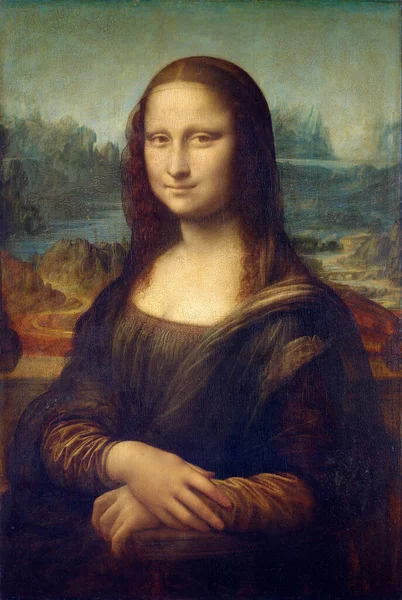
2. The Starry Night, Vincent van Gogh – 1889
The painting depicts a beautiful night sky, a view from Gogh's asylum room at Saint-Paul-de-Mausole in southern France, where he was recovering from mental illness.
The Starry Night is known for its swirling, dreamlike composition and vivid colours.
3. The Birth of Venus, Sandro Botticelli – 1480's
It depicts the goddess Venus emerging from the sea on a shell, surrounded by other figures from classical mythology. The painting showcases its graceful composition and idealised beauty.

4. The Persistence of Memory, Salvador Dalí – 1931
This oil on canvas painting depicts a surreal landscape with melting clocks and other distorted objects. The painting is known for its dreamlike quality and exploration of the subconscious mind.
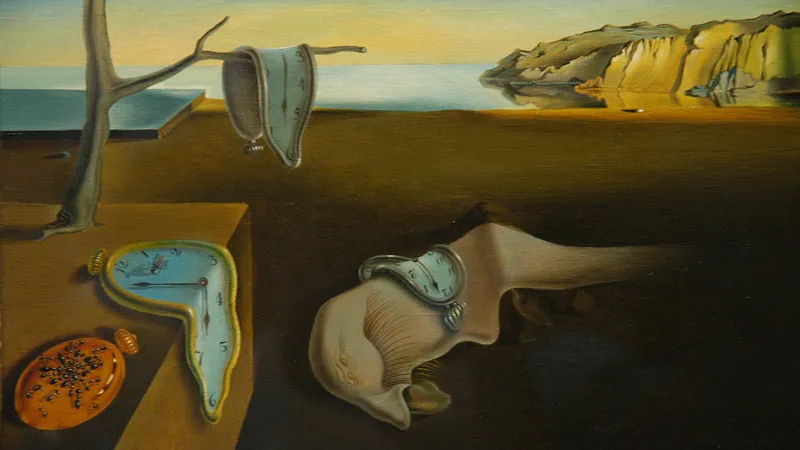
5. The Treachery of Images, René Magritte – 1929
This painting features a pipe with the words
"Ceci n'est pas une pipe" (written underneath), French for "This is not a pipe." It is known for its exploration of the relationship between language and reality.
6. Shot Marilyns, Andy Warhol – 1964
Shot Marilyns is a series of portraits that depict Marilyn Monroe's face in different images and colour variants. The paintings are known for using repetition and exploring celebrity culture.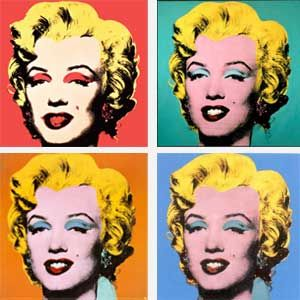
7. Hope, Shepard Fairey – 2008
Hope is a poster by Fairey for Barack Obama's presidential campaign. It shows Obama's face with the word "Hope" written underneath in bold letters. This is known for its iconic status and use of graphic design in political messaging.
8. The Great Wave off Kanagawa, Hokusai – 1831
The Great Wave off Kanagawa is a woodblock print by Hokusai. It depicts a giant wave towering over three boats and a distant Mount Fuji in the background. The print is known for its dynamic composition and influence on Western art.
9. Girl with a Pearl Earring, Johannes Vermeer – 1665
Vermeer's
Girl with a Pearl Earring is an oil painting that depicts a young woman wearing a very large pearl earring and a blue and gold turban. The painting is known for its use of light and shadow and enigmatic expression.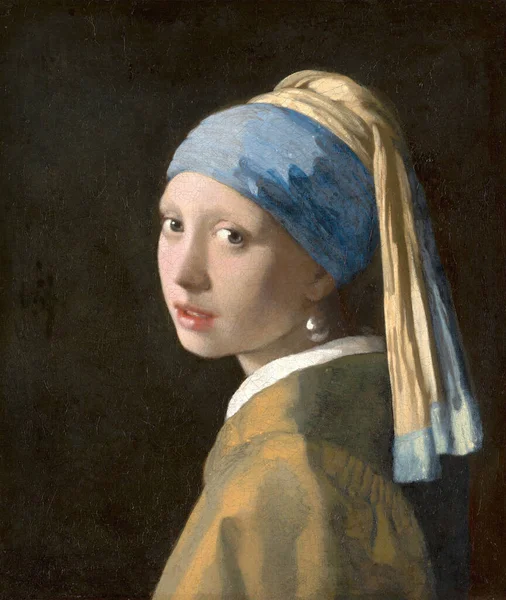
10. A Sunday Afternoon on the Island of La Grande Jatte, Georges Seurat – 1884
A Sunday Afternoon on the Island of La Grande Jatte is a painting created on a large canvas. It depicts a group of Parisian people relaxing in a park on an island in the Seine River called La Grande Jatte. The painting is known for using pointillism, a technique in which small dots of colour are applied to create an image.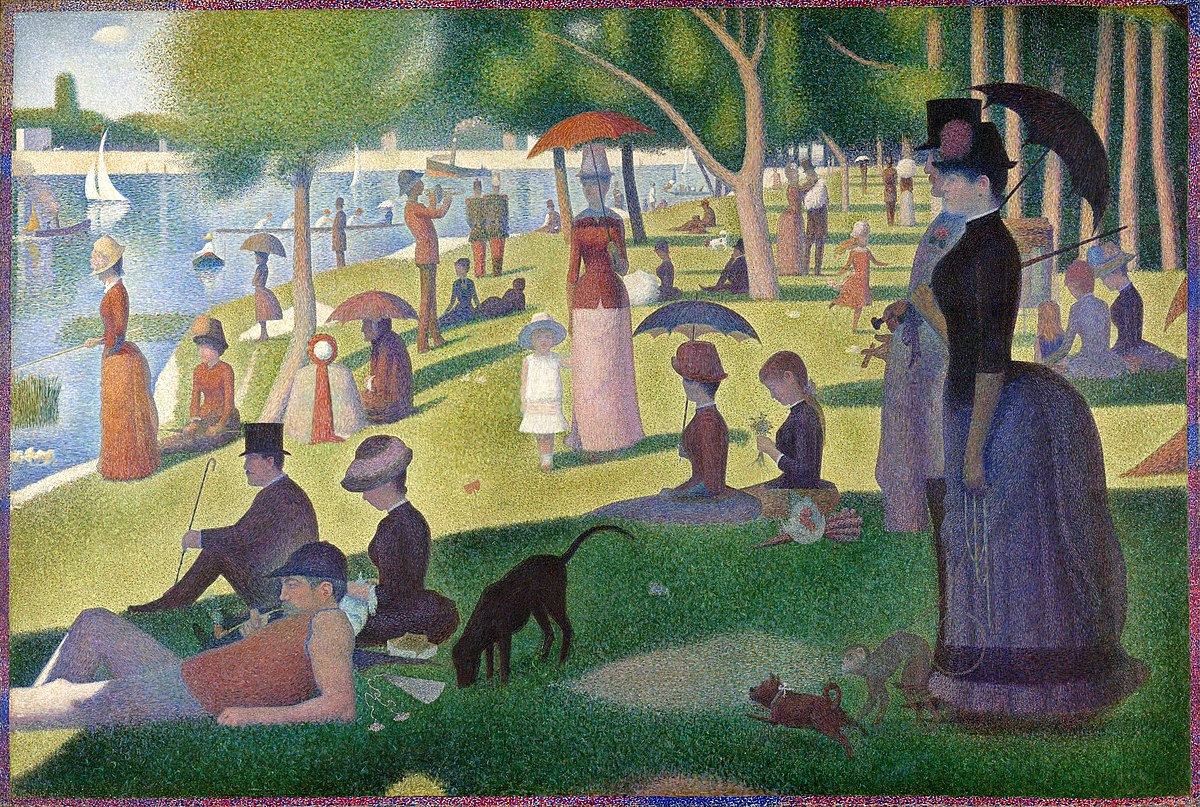
These are just a few examples that demonstrate the versatility and enduring appeal of canvas art. Whether you're an interior designer looking to add character to a space or a gift shopper seeking something special, canvas art provides endless possibilities for personal expression.
FAQs
What is the difference between canvas art and print?
A traditional piece of canvas art refers to artwork painted directly on the fabric, while a canvas print involves reproducing an existing image or digital design onto the material.
What is special about Canvas?
Canvas is a special material in the art world that provides a durable and versatile surface for artists, allowing for various techniques and styles. It also adds a classic touch to prints and paintings. Additionally, canvas has a rich history and has remained a cornerstone of artistic expression.
What makes the modern canvas art trend so popular?
Modern canvas art is popular for its versatility, adaptability to various interior styles, and ability to showcase both contemporary and classic artworks. Canvas printing, for instance, allows artists to replicate their original works, making art more accessible to a broader audience.
Why do artists use canvas for painting?
Artists choose canvas for painting primarily because of its unique characteristics – it is a medium that accommodates every artist’s unique style. Canvas offers a textured and forgiving surface that enhances paint adherence and longevity. It allows for expressive brushstrokes and experimentation with different mediums.
What makes canvas art a unique form of expression?
Canvas art allows artists to show their creativity and emotions with a tactile and enduring medium. As an example, the masterpieces mentioned earlier illustrate how canvas art can truly be a unique form of expression.
Conclusion
The beauty of canvas art lies not just in its visual appeal but also in its rich history and diverse forms. Whether you're an artist seeking inspiration, an interior designer looking for unique pieces to enhance your projects, or simply someone who appreciates fine artwork - there's something about canvas art that resonates with everyone.
MintSuper Art offers you this wonderful opportunity to explore our wide collection of captivating Canvas Art designed by talented artists around the globe. So why wait? Dive into the world of Canvas Art today!

